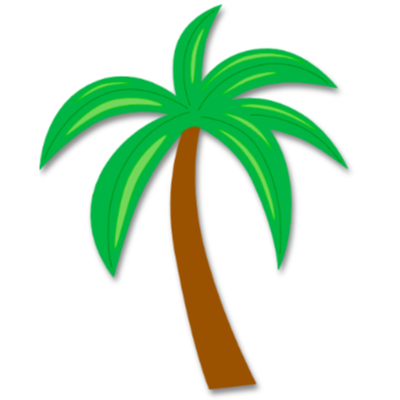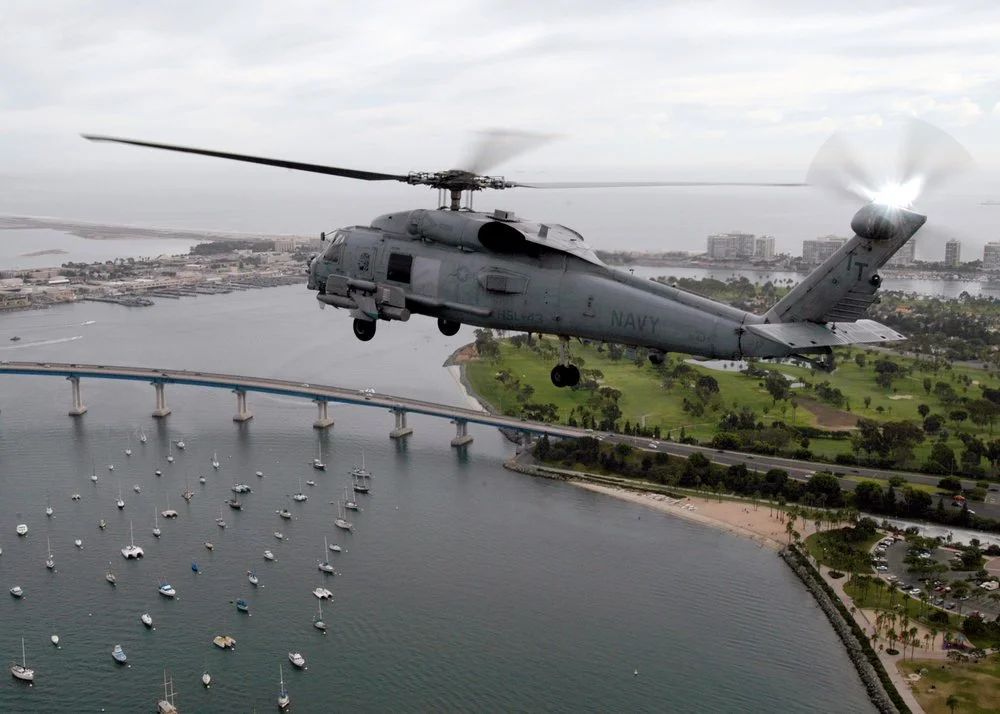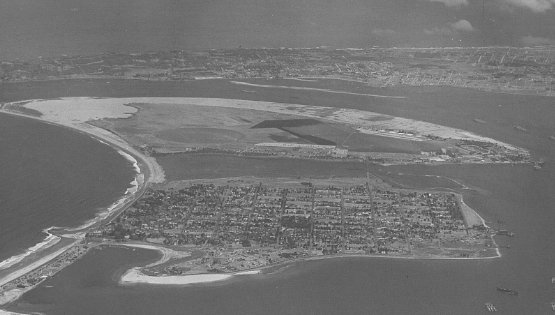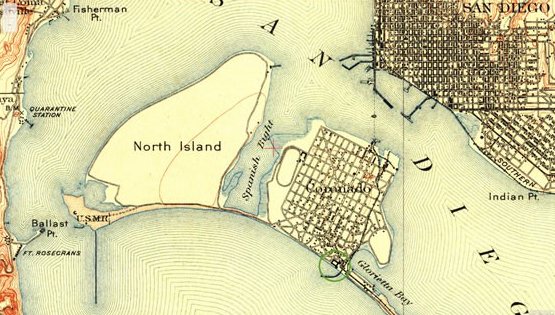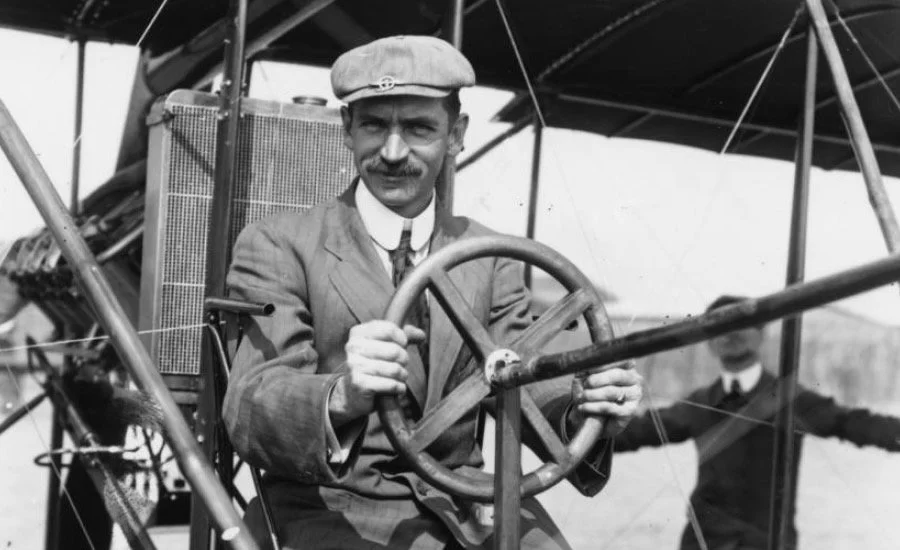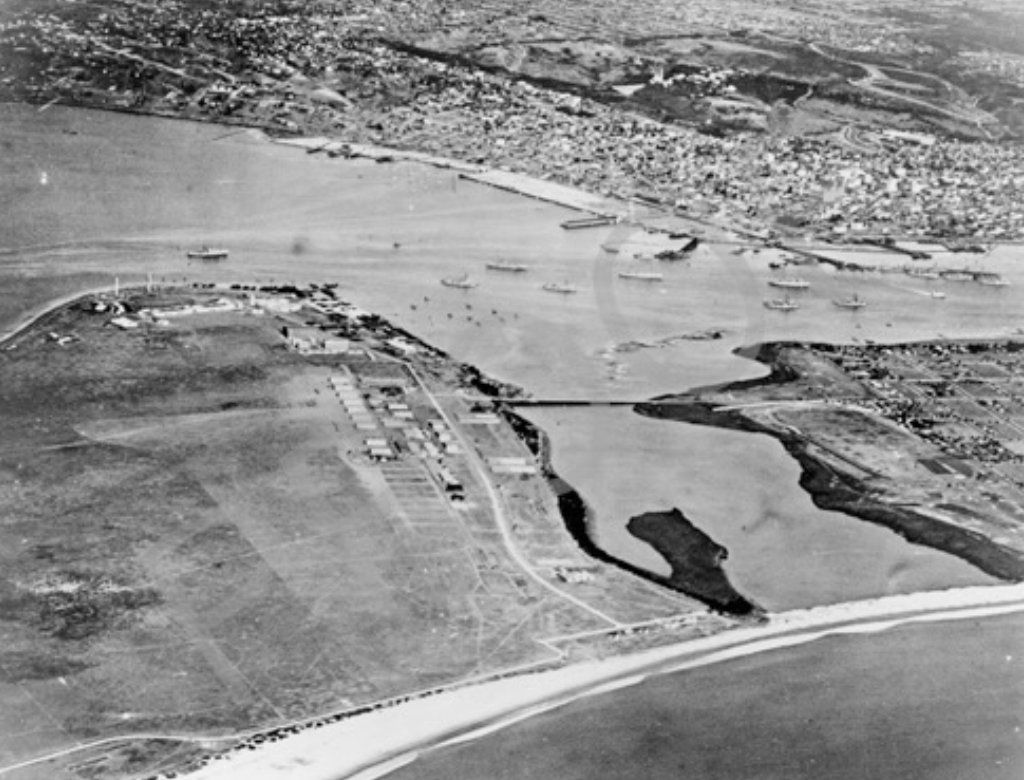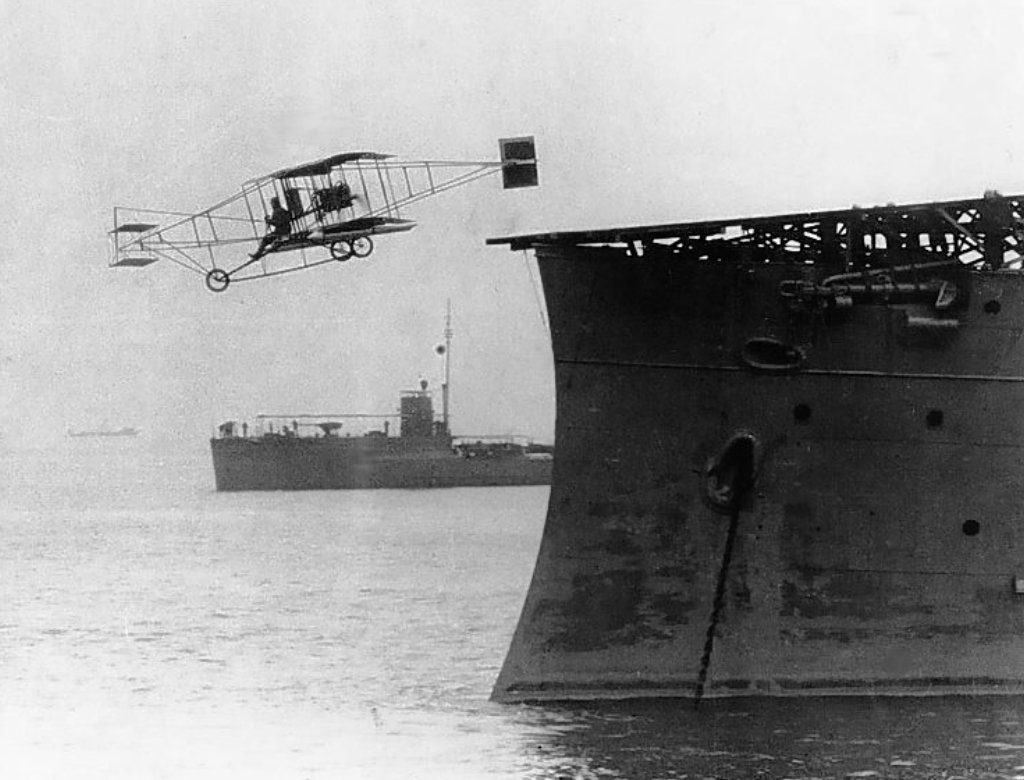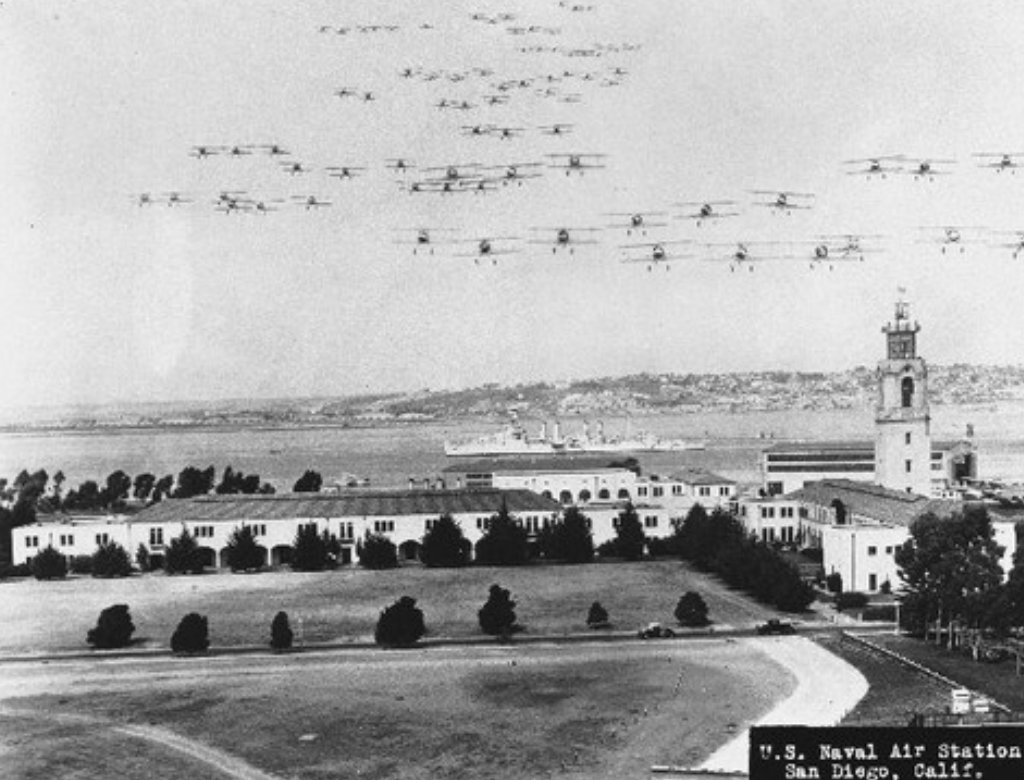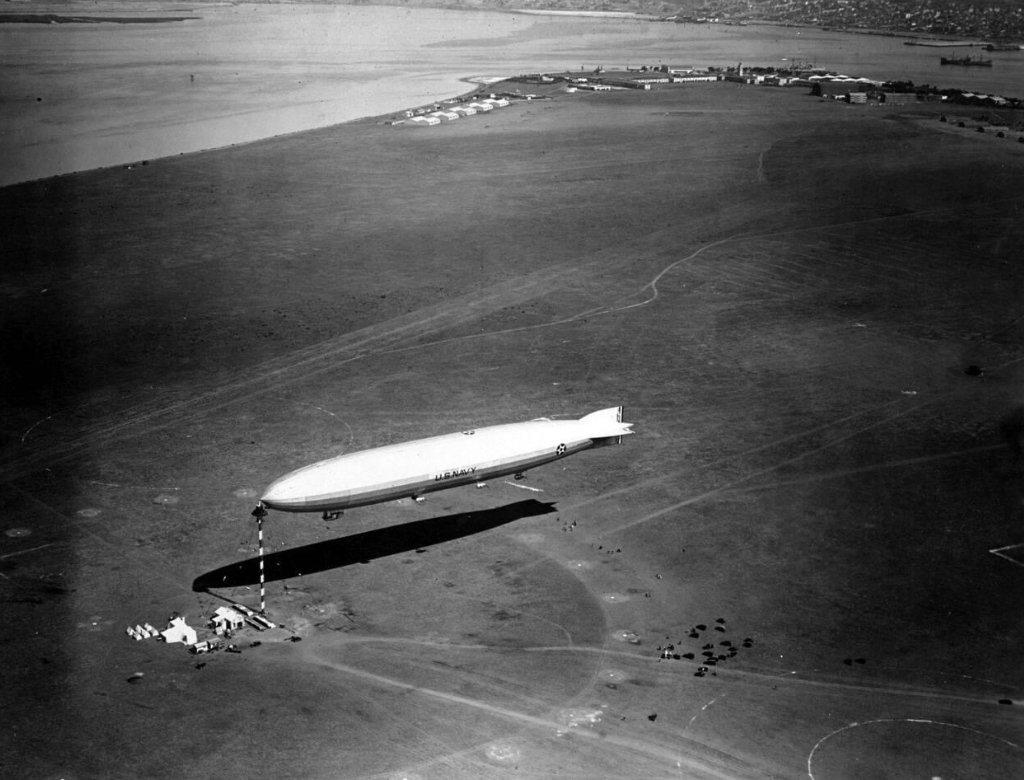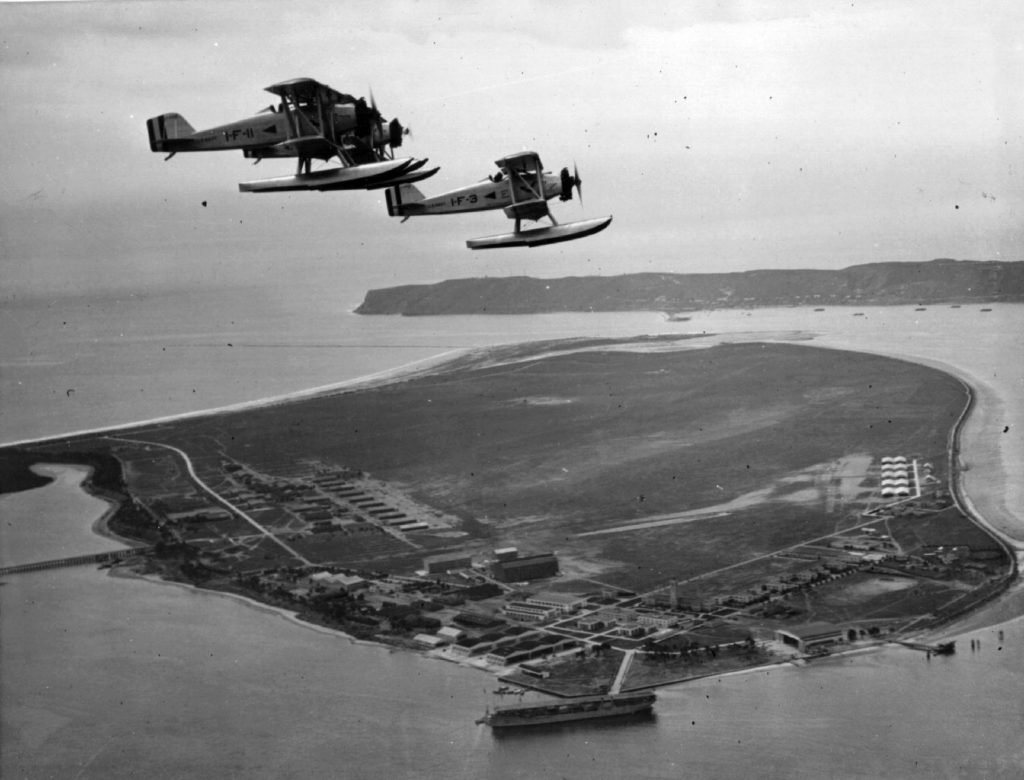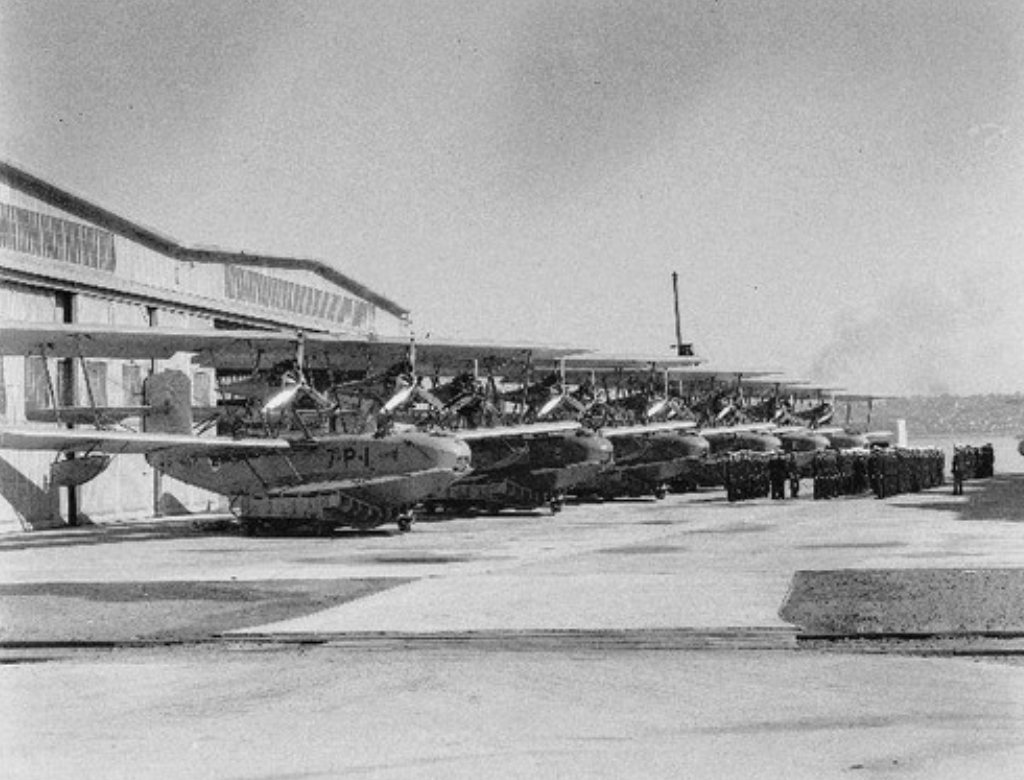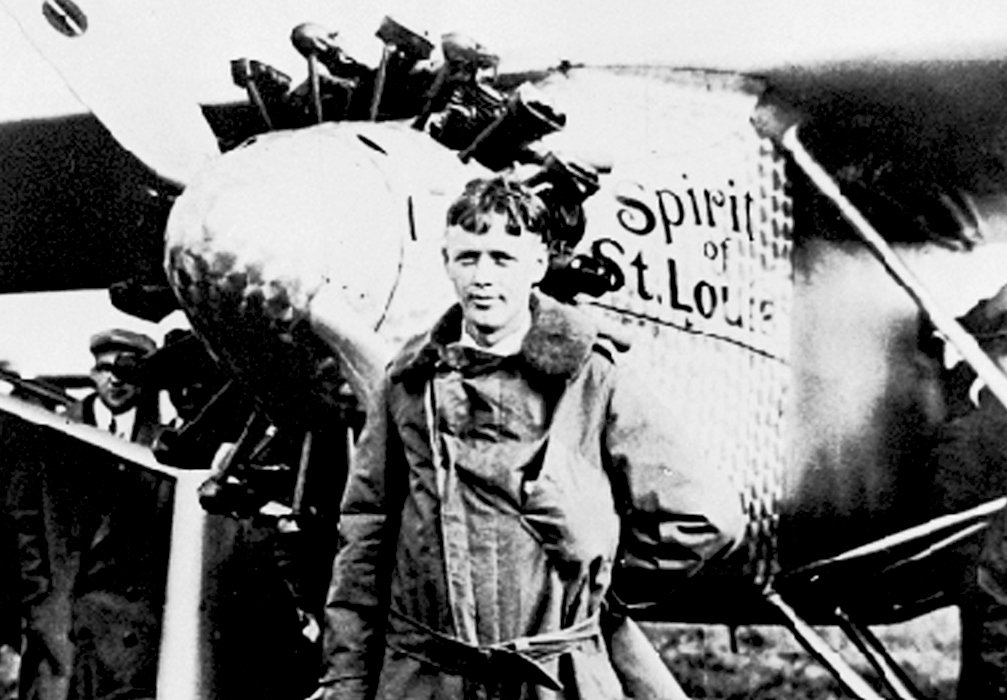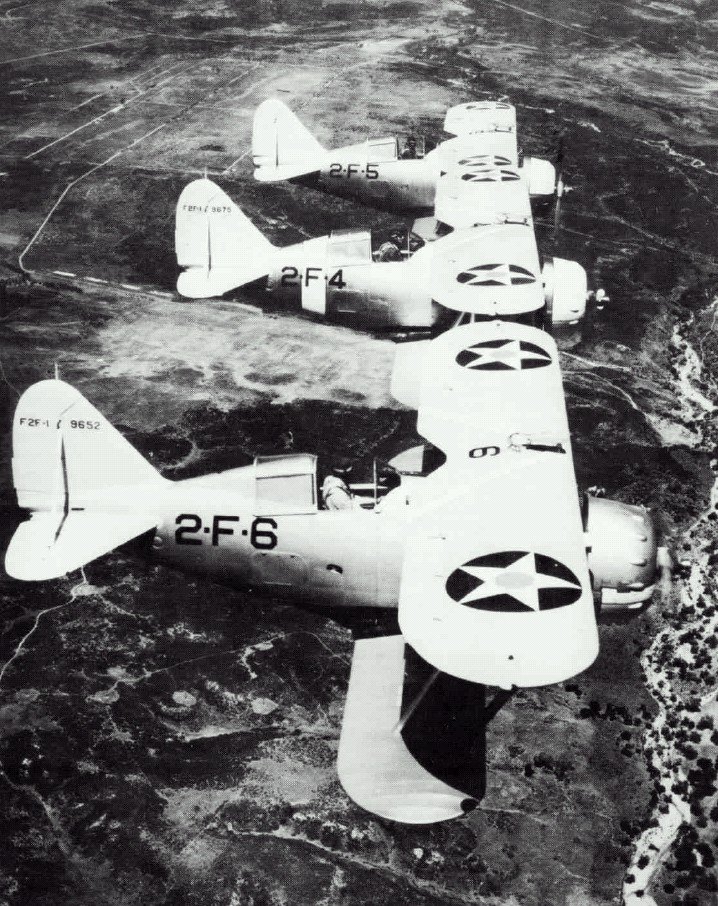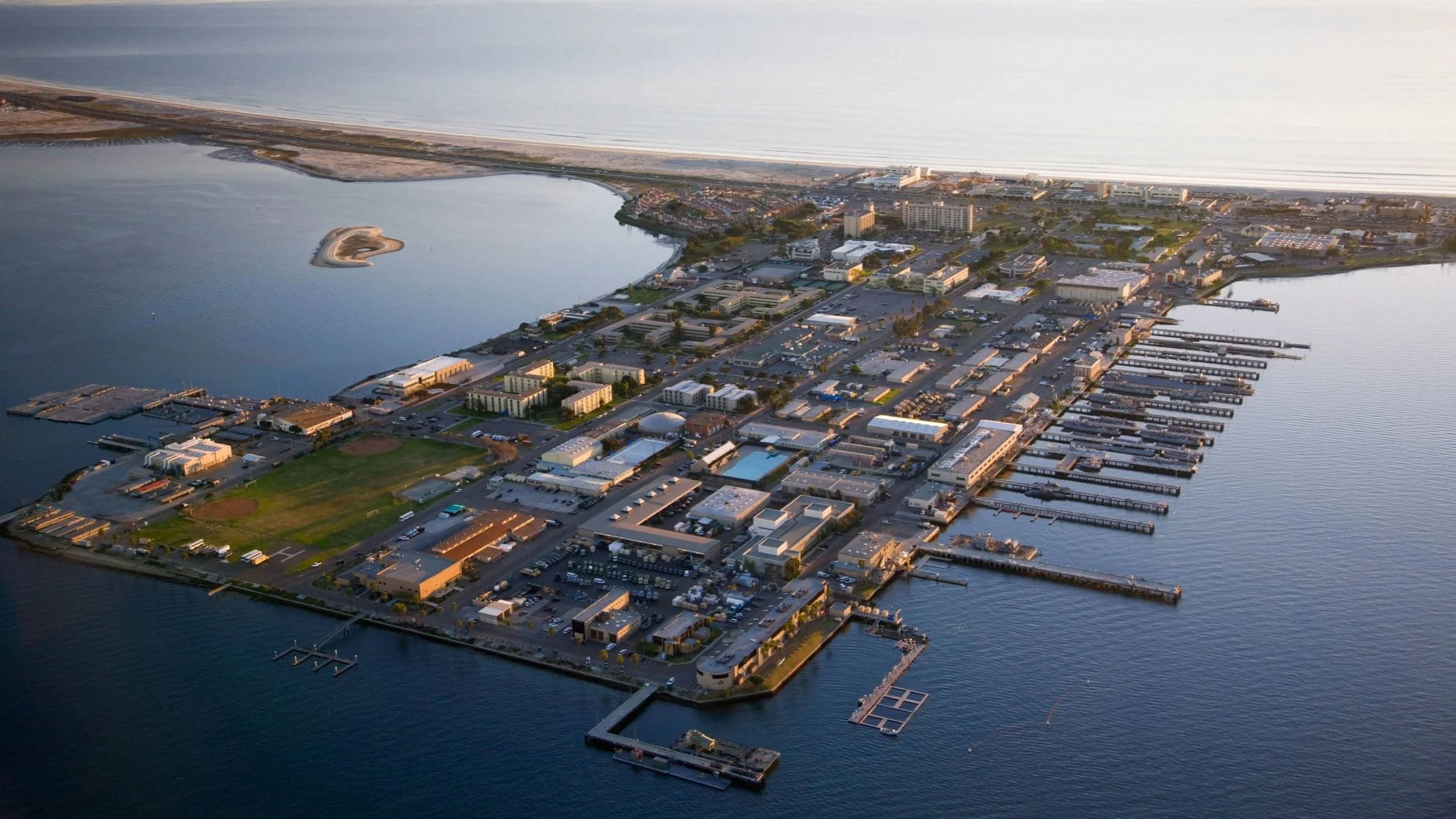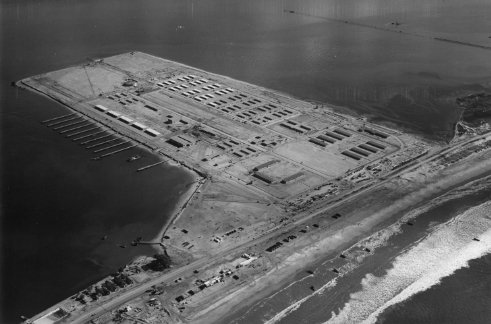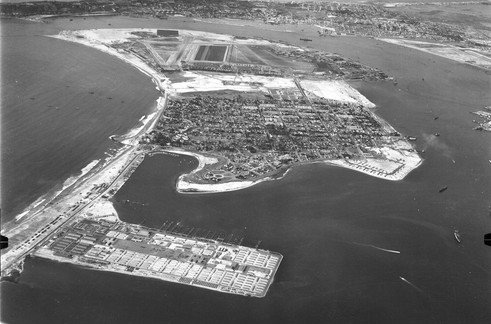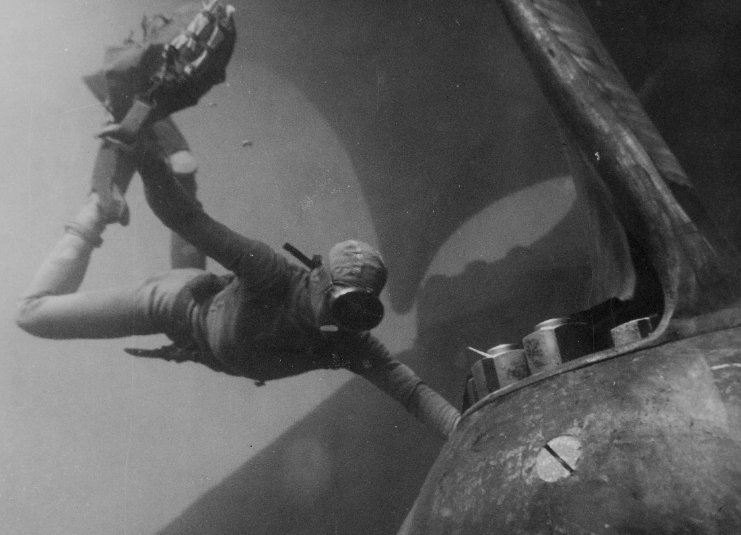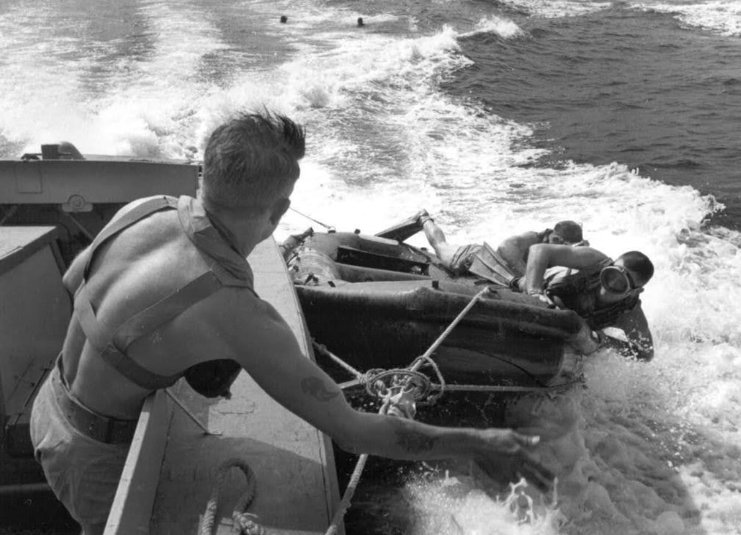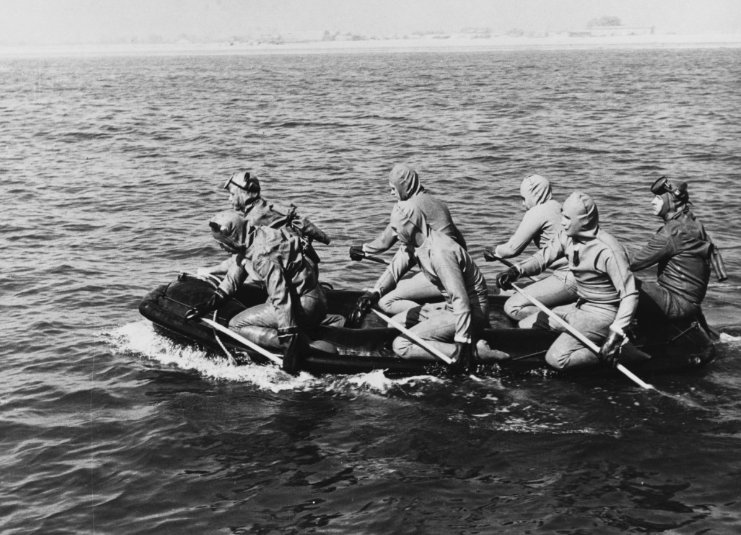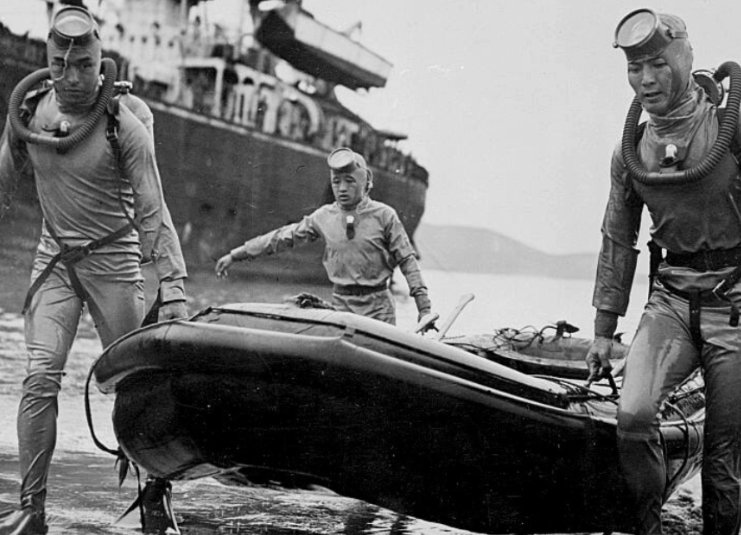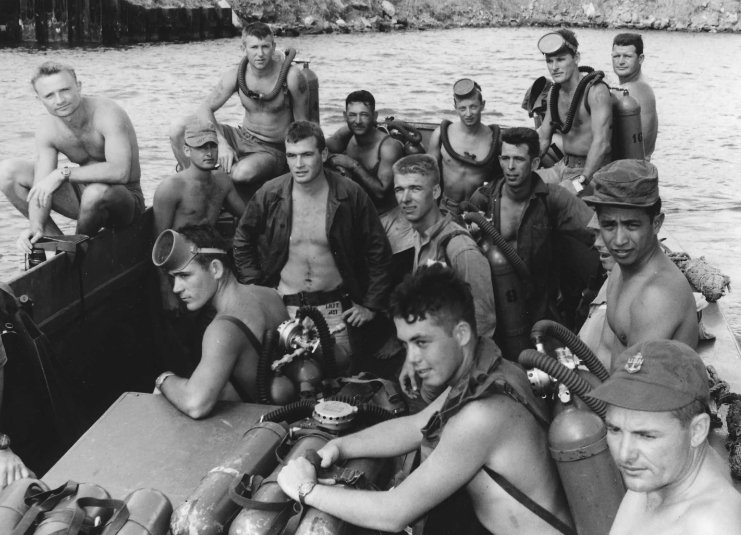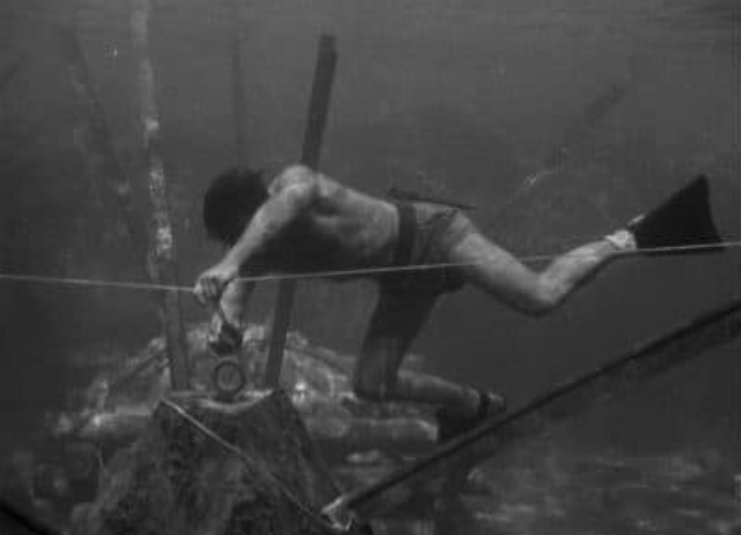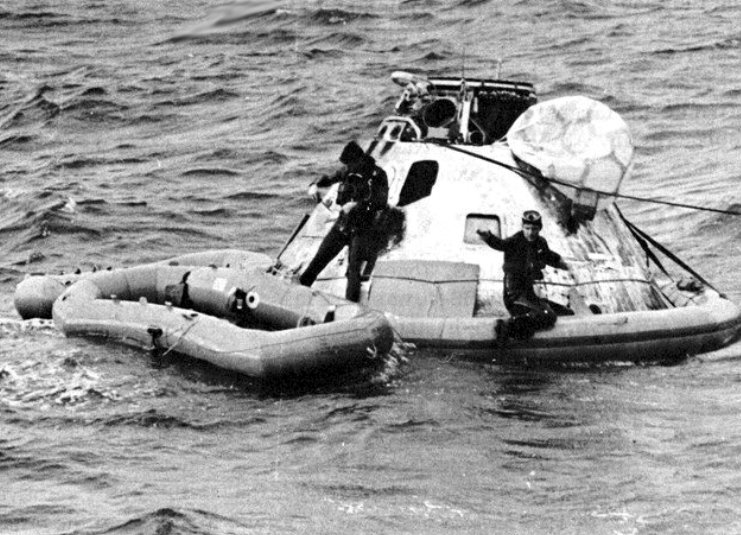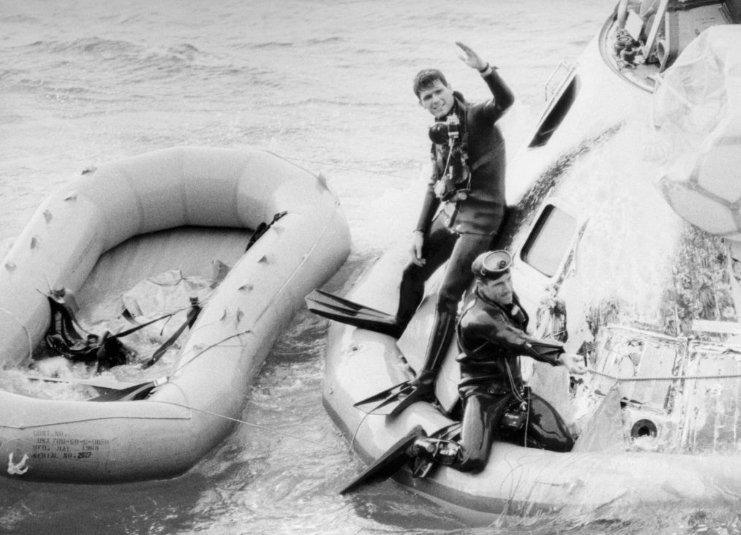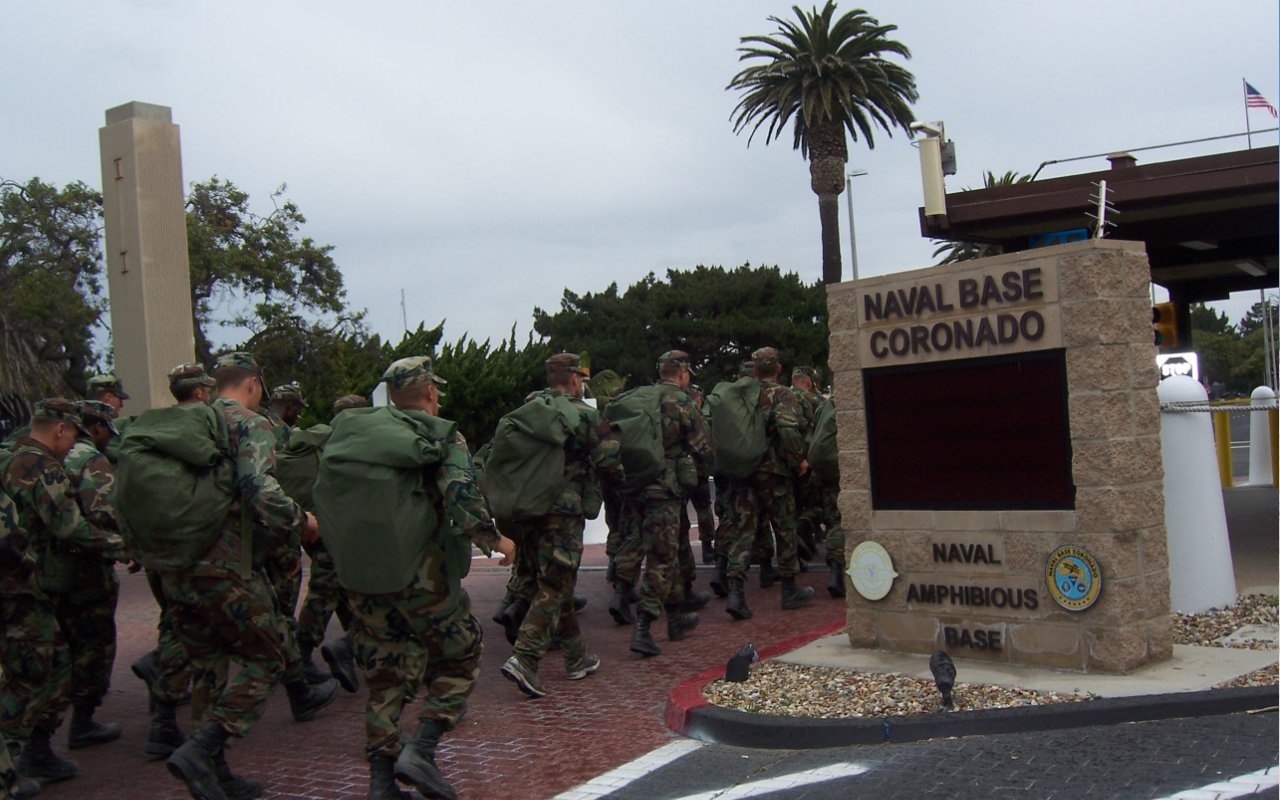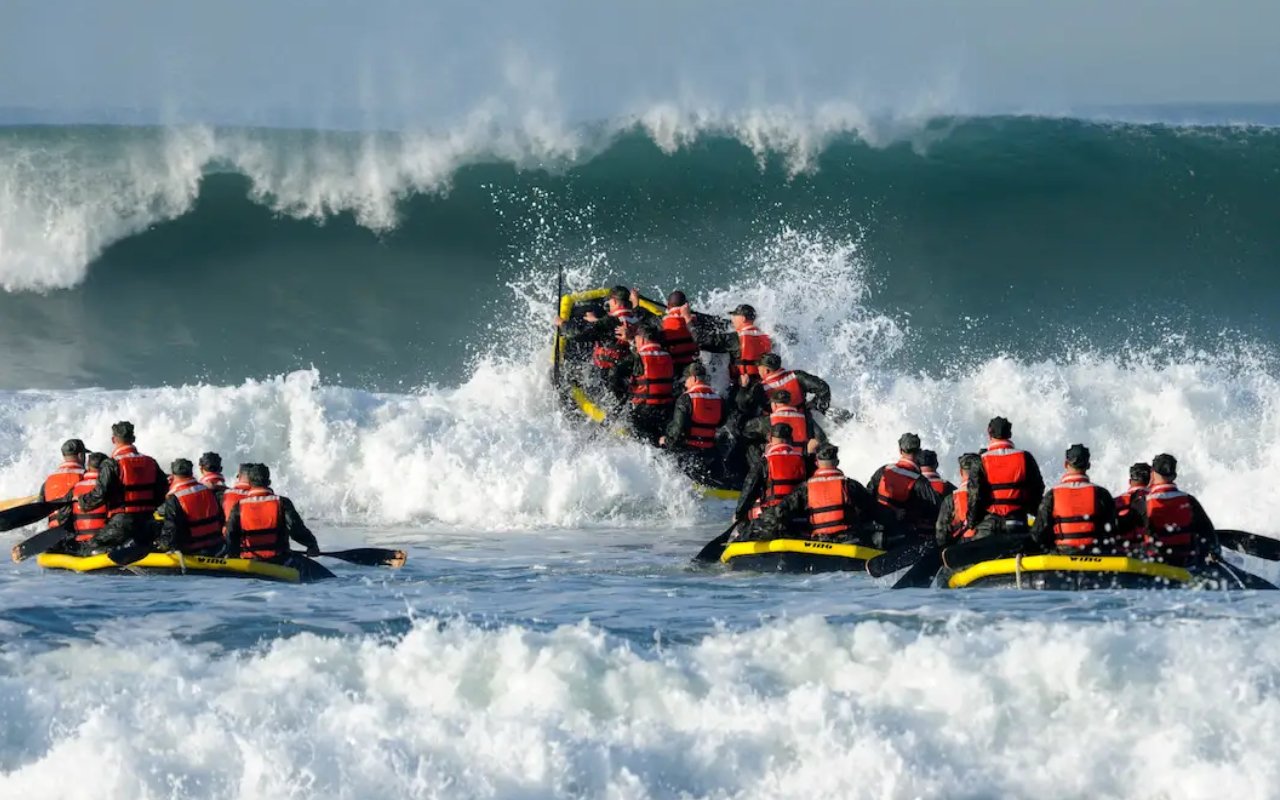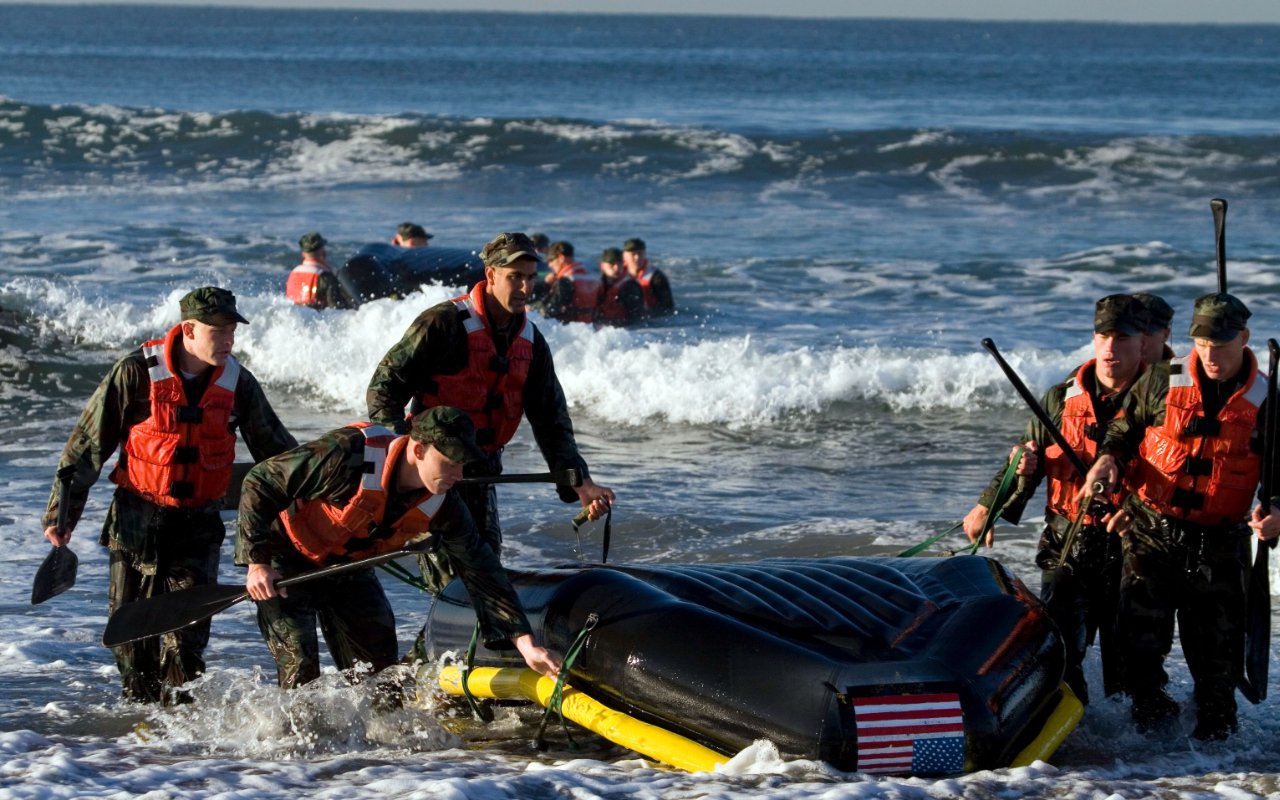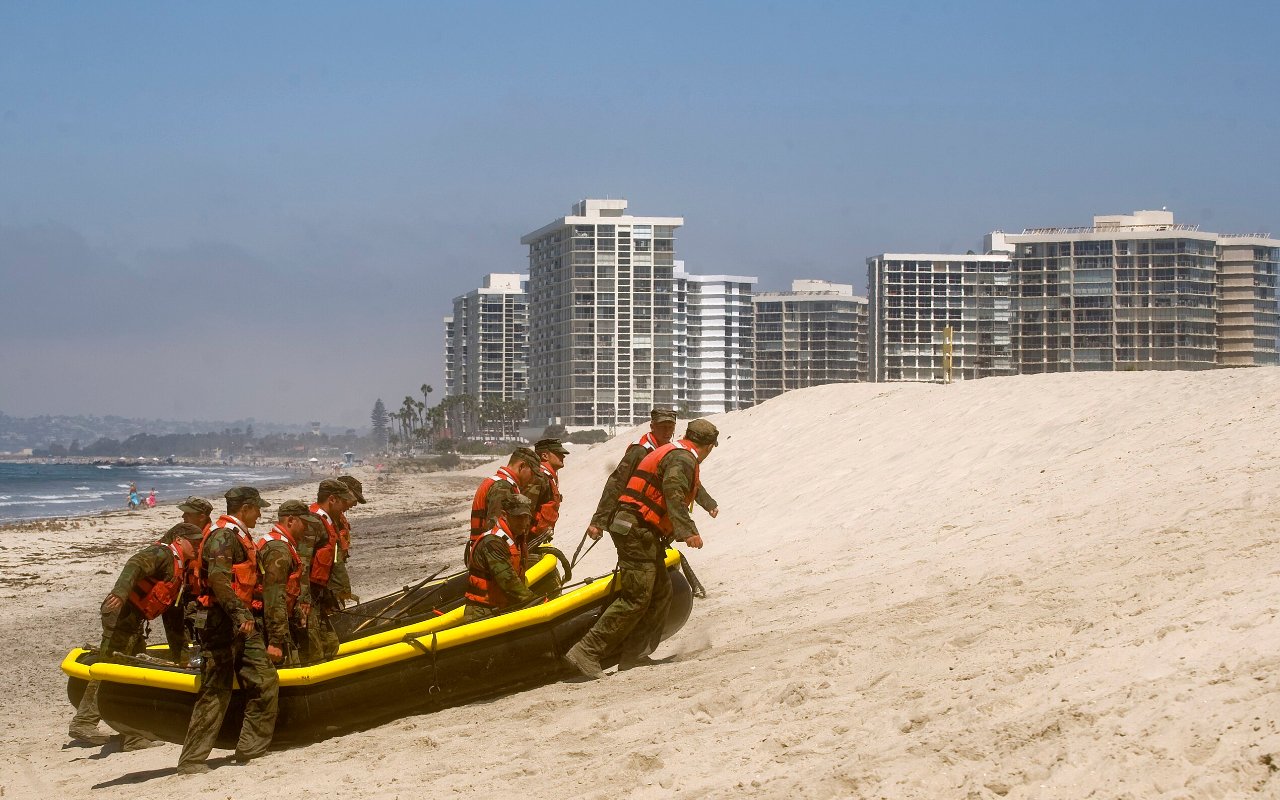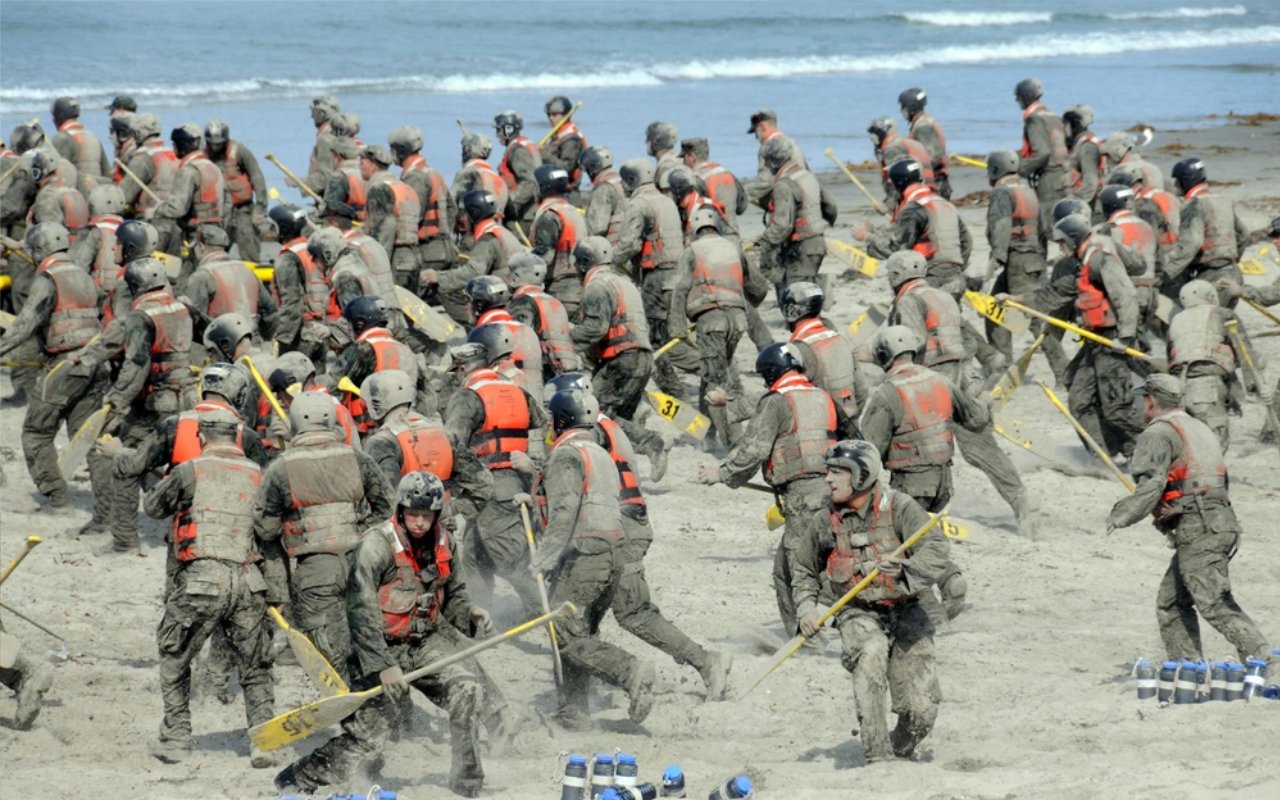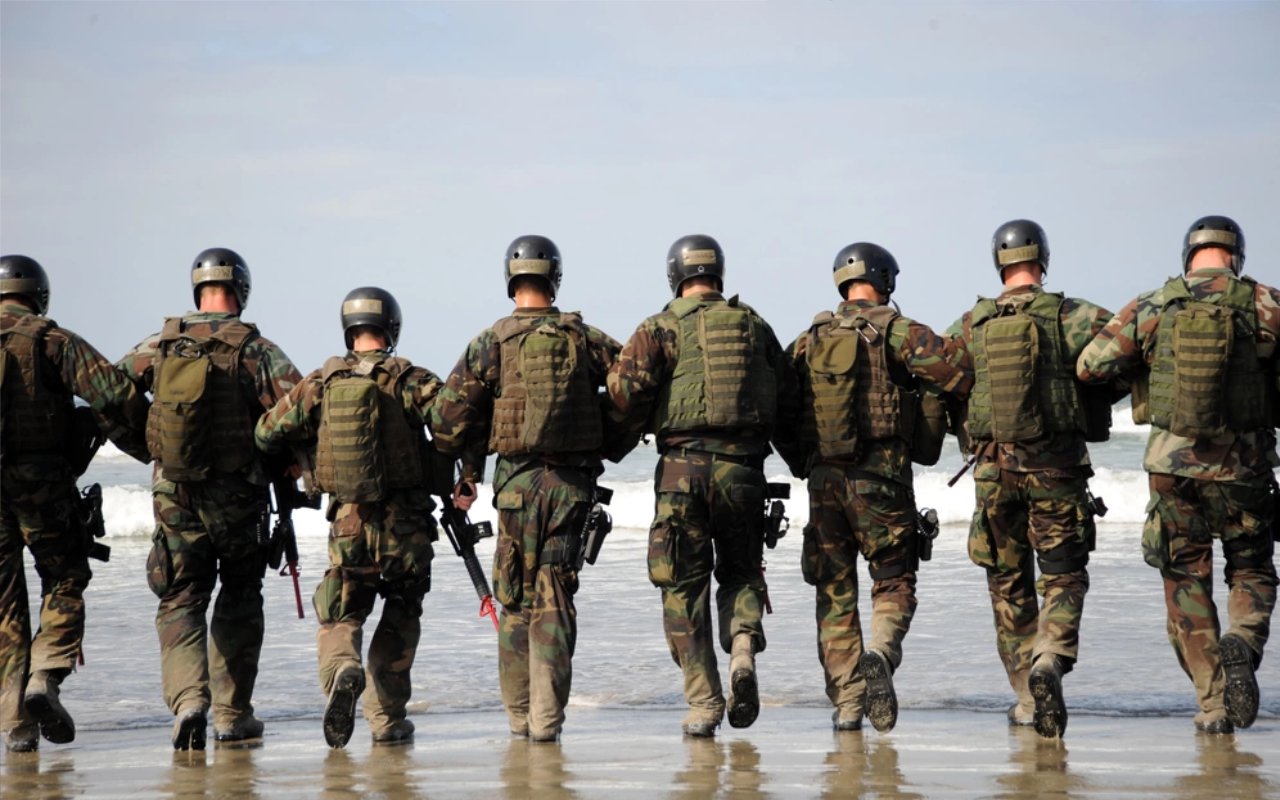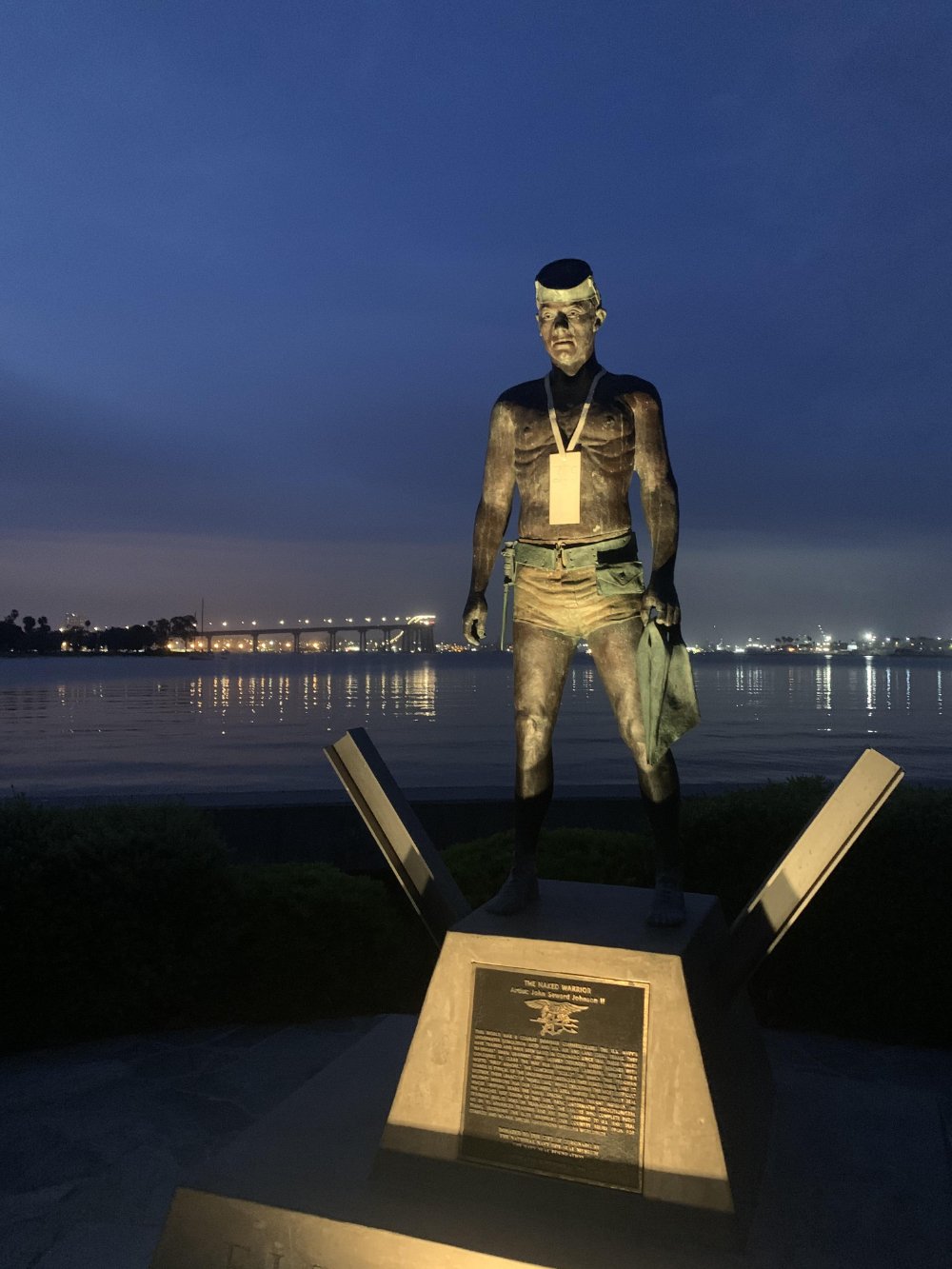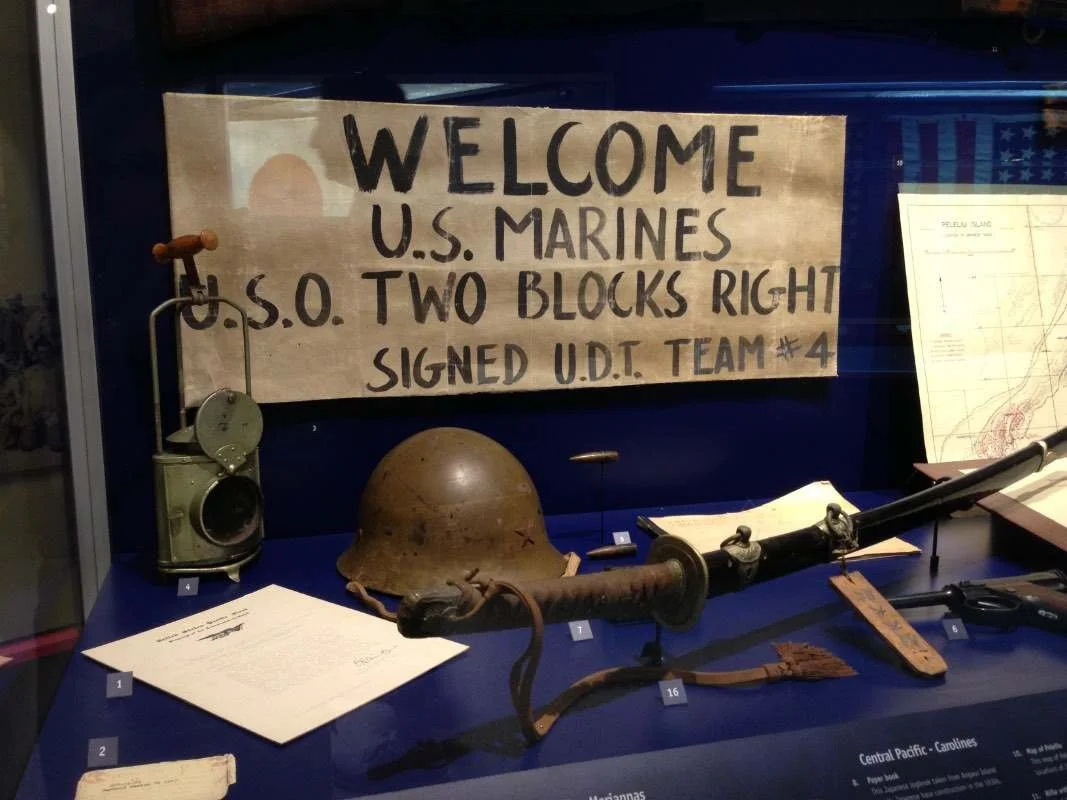U.S. Navy & Coronado
coronado, california
Naval Base Coronado (NBC)
Naval Base Coronado encompasses eight military facilities in the Southern California area under one Command.
These eight facilities encompass more than 57,000 acres and make NBC the largest command in the southwest region of the U.S. Employing over 36,000 military and civilian personnel, NBC accounts for over 30% of the Region's total workforce, the largest workforce in San Diego County.
Naval Air Station North Island (NASNI)
Naval Amphibious Base Coronado (NAB)
Naval Outlying Landing Field Imperial Beach (NOLFIB)
Naval Auxiliary Landing Field San Clemente Island (NALFSCI)
Silver Strand Training Complex (SSTC), formerly known as the Naval Radio Receiving Facility
Mountain Warfare Training Camp Michael Monsoor (MWTCMM)
Camp Morena; and the Remote Training Site, Warner Springs (RTSWS)
Naval Air Station North Island
NASNI is located at the north end of Coronado Island in San Diego Bay and hosts nearly all of the Pacific Fleet's helicopter squadrons, as well as several fixed-wing squadrons. Its airfield has over 230 stationed aircraft and it’s homeport to three aircraft carriers.
USS Abraham Lincoln (CVN-72)
USS Carl Vinson (CVN-70)
USS Theodore Roosevelt (CVN-71)
With all the ships in port, the population of the NASNI is nearly 35,000 active duty military, selected reserve military, and civilian personnel.
Naval Air Station North Island - Coronado, CA
The History of NASNI - The Birthplace of Naval Aviation
North Island originally got its name from its geography. In the late 1800’s, it was referred to as North Coronado Island, because it was separated from South Coronado (now the city of Coronado) by a shallow bay known as the Spanish Bight.
At that time, North Island was an uninhabited sand flat owned by John Spreckles, owner of the Hotel del Coronado. Hotel guests used it for horseback riding and jackrabbit hunting parties.
During WWII, the Spanish Bight was filled from the dredging of the shallow San Diego Bay in order for larger Navy ships.
Glenn Curtiss - The Father of Naval Aviation
Glenn Curtiss opens a flying school on the North Coronado Island
Shortly after Orville and Wilbur Wright flew the first manned aircraft at Kitty Hawk, NC (1903), aviation pioneer Glenn Curtiss leased the North Island from Spreckles to open a flying school.
Glenn Curtiss began his career as a Western Union bicycle messenger, a bicycle racer, and bicycle-shop owner. In 1902, Curtiss began manufacturing motorcycles with his own single-cylinder engines. After breaking several land speed records, he began adapting his engines for use on airships & dirigibles.
Recognizing the potential of fixed-wing aircraft in military applications, Curtiss began to experiment and develop advancements in aircraft design.
At the end of 1910, Curtiss established a program in San Diego to teach flying to both the Army Air Corps and the U.S. Navy. Here, he trained Lt. Theodore Ellyson, who became U.S. Naval Aviator #1.
In 1911, after developing a float (pontoon) design that enabled him to take off and land on water, Curtiss flew the first seaplane from the water in the United States. Demonstrations of this advanced design were of great interest to the Navy.
On February 24, 1911, Curtiss made his first amphibious demonstration at North Island by taking off and landing on both land and water.
First Amphibious Seaplane demonstrated to U.S. Navy by Glenn Curtiss (1911)
Glenn Curtiss’ contribution to military aviation advancement earned him the title “Father of Naval Aviation”. Many say the Tom Swift character is based on Glenn Curtiss. Tom Swift, based on a fictional character set in a small town on a lake in upstate New York, first appeared in 1910 in ‘Tom Swift and His Motor Cycle’ and ‘Tom Swift and His Airship’.
Congress Appropriates the North Island - Creating the first Naval Air Station
In 1917, Congress appropriated the land, and two airfields were commissioned on its sandy flats. The Navy shared North Island with the Army Air Corps, starting with a tent city known as "Camp Trouble". As its name suggests, things did not always go well in the early days.
Officially commissioned Naval Air Station San Diego, the Army’s airfield was called Rockwell Field until 1937, when the Army left and the Navy expanded its operations to cover the whole of North Island.
Many aviation milestones originated from North Island including the first seaplane flight in 1911, the pusher aircraft in 1914, the first mid-air refueling in 1923, the first non- stop transcontinental flight in 1923, and also the first parachute jump made in San Diego area in 1914.
Charles A. LindbergH
One of history's most famous aviation feats was the flight of Charles A. Lindbergh from New York to Paris in May 1927. That flight originated at North Island’s Rockwell Field on May 10, 1927, when Lindbergh began the first leg of his journey - a transcontinental flight from San Diego to New York.
The Spirit of St. Louis was designed and built right here in San Diego by Ryan Airlines. Ryan Airlines worked closely with Lindbergh to design and build the Spirit in just 60 days.
Lindbergh's New York-to-Paris flight made him an instant celebrity and media star, winning the $25,000 Orteig Prize, and stirring the public's imagination in aviation.
Charles A. Lindbergh’s New York-to-Paris flight originates from North Island
U.S. Navy Sea Hawks - Demonstration Team
Forefathers of today's "Blue Angels", the three-plane "Sea Hawks" from VF-6B, the "Felix the Cat" squadron, were thrilling audiences with flight demonstrations as early as 1928.
They demonstrated the training skills of Navy fighter and bomber pilots and on many occasions, flew their aircraft in formation with the wings tethered together.
Birthplace of Naval Aviation
During World War II, North Island was the major continental U.S. base supporting the operating forces in the Pacific. Those forces included over a dozen aircraft carriers, the Coast Guard, Army, Marines, and Seabees. Major USO entertainment shows and bond drives were held weekly at the Ship's Service auditorium, where stars like the Marx Brothers and Bob Hope appeared regularly at USO shows.
In 1955 the name officially became Naval Air Station North Island, and on August 15, 1963, the NASNI was granted official recognition as the "Birthplace of Naval Aviation" by resolution of the House Armed Services Committee.
Naval Amphibious Base Coronado
Coronado, CAlifornia
Naval Amphibious Base Coronado is the West Coast focal point for special and expeditionary warfare training and operations.
It is home to 30 commands including the headquarters for the Naval Special Warfare Command, America's elite maritime special operations forces - the U.S. Navy SEALs and Special Warfare Combatant Craft Crewmen.
One of the only two Naval Amphibious bases in the United States, it is approximately 1,000 acres with a population of 5,000 military personnel and 7,000 military student personnel.
Naval Amphibious Base Coronado / BUD/S (SEAL’s) Training Beach
History of Coronado’s amphibious Training Base
In June 1943, the Secretary of the Navy authorized the establishment of the Amphibious Training Base in the San Diego area to meet wartime’s demands for trained landing craft crews.
These crews were deployed to the South Pacific area of operations, where their successful and historical efforts were contributory to the conclusion of World War II.
The Naval Amphibious Base was formally commissioned in January 1944. In 1946, the base was renamed Naval Amphibious Base (NAB) Coronado.
Most of the base is was literally created from the dredging of San Diego Bay done to allow large ships used in World War II to steam into Naval Station San Diego.
The streets of the base bear the names of those famous battles which led to the defeat of the Japanese Empire: Guadalcanal, Tarawa, Tulagi, and Bougainville, to name a few.
Its adjacent beaches along the Silver Strand provide training for Navy SEALs (BUD/S), amphibious insertion and other small units.
Underwater Demolition TeamS (UDT) - Navy Frogmen
Underwater Demolition Teams (UDT), or frogmen, were amphibious units created by the United States Navy during World War II with specialized non-tactical missions.
Realizing that in order to strike at the Axis powers, the U.S. forces would need to perform a large number of amphibious attacks. The Navy decided that men would have to go in to reconnoiter the landing beaches, locate obstacles and defenses, as well as guide the landing forces ashore.
Their primary function began with reconnaissance and underwater demolition of natural or man-made obstacles obstructing amphibious landings. Later years they participated in Nasa’s Apollo capsule recovery program.
Birth of The Navy Seal
In the mid-1950s, the Navy saw how the UDT's mission had expanded to a broad range of "unconventional warfare", but also that this clashed with the UDT's traditional focus on swimming and diving operations.
It was therefore decided to create a new type of unit that would build on the UDT's elite qualities and water-borne expertise, but would add land combat skills, including parachute training and guerrilla/counterinsurgency operations.
These new teams would come to be known as the US Navy SEALs, an acronym for Sea, Air, and Land.
BUD/S - Basic Underwater Demolitions / SEAL Training Program
Approximately 4 miles of Coronado’s Silver Strand beach is used for the Navy’s BUD/S program, an intense 24-week training course that develops the SEAL candidates' mental and physical stamina and leadership skills.
Training to become a Navy SEAL is voluntary, and officers and enlisted sailors train side by side. The average member of the United States Navy's SEAL Teams spends over a year in a series of formal training environments before being awarded the Special Warfare Operator Naval Rating.
The Naked Warrior - Glorietta Bay Park Commemorative Statue
ARTIST: JOHN SEWARD JOHNSON II
This World War II combat swimmer commemorates the U.S. Navy’s Underwater Demolition Teams (UDT) and Sea, Air and Land (SEAL) Teams. They have trained and have been in Coronado since 1945.
These “Naked Warriors” swam unarmed onto heavily defended enemy beaches with explosives to clear the way for amphibious landings, hence their motto “First Ashore.” The concrete “Scully” on which this Frogman stands is typical of the underwater obstacles they risked their lives to destroy. Their legacy of “Never Quit,” while executing the most difficult military missions for our country, is still imbued in every Navy SEAL whose uniforms sears the Naval Special Warfare Trident insignia. On the beaches just south of this site, Basic Underwater Demolition/SEAL (BUD/S) Training goes on year-round. The sailors who complete BUD/S go on to advanced training and then are assigned to U.S. Navy SEAL Teams, becoming the elite warriors our country relies upon for complex and no-fail special operations missions worldwide.
DONATED TO THE CITY OF CORONADO BY
THE NATIONAL NAVY UDT-SEAL MUSEUM
THE NAVY SEAL FOUNDATION
DEDICATED NOVEMBER 11, 2016
Welcoming invading Marines ashore was always a friendly joke by the UDT’s
‘First Ashore’ - UDT’s Motto
The foundation under the scully reads, “First Ashore”, the WWII motto of the UDTs in the Pacific Theater.
Many a friendly joke has been made over the decades, that the UDTs were always on the beach to welcome the invading Marines.
